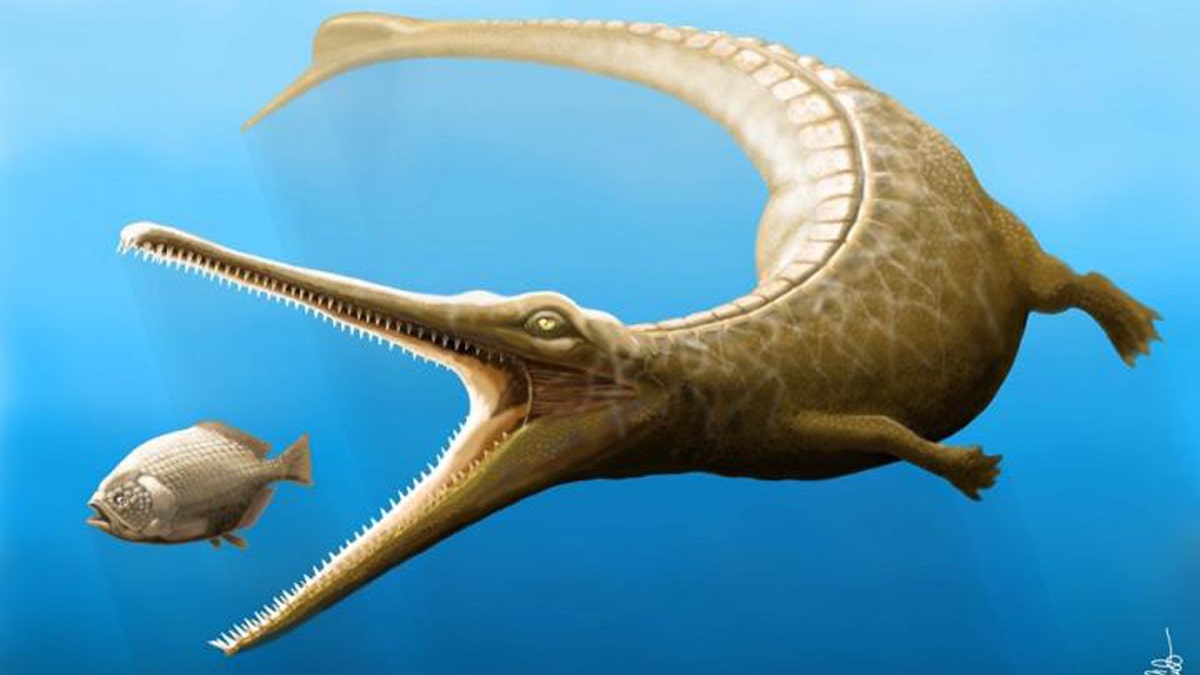
This is an artist's impression of Magyarosuchus fitosi. (Credit: Marton Szabo)
The discovery of an ancient type of crocodile that lived during the Jurassic Period, at the height of the age of dinosaurs, has shed new light on the species.
The 180 million-year-old fossil, named Magyarosuchus fitosi, shows that some ancient crocodiles evolved to have dolphin-like features.
The fossil was analyzed recently and found to have abnormal vertebra in its tail fin, effectively combining two different families of crocodiles – one that had limbs for walking on the surface and a bone-like protective armor on its back and one that had tail fins and flippers to aid with swimming in the ancient seas.
MASSIVE 205-MILLION-YEAR-OLD ICHTHYOSAUR FOSSIL DISCOVERED, 'ONE OF THE LARGEST ANIMALS EVER'
"This fossil provides a unique insight into how crocodiles began evolving into dolphin and killer whale-like forms more than 180 million years ago," Dr. Mark Young, of the University of Edinburgh's School of GeoSciences, said in a statement. "The presence of both bony armour and a tail fin highlights the remarkable diversity of Jurassic-era crocodiles."
The new finding was made after the team of paleontologists analyzed the bones, which had been kept at a museum in Budapest. The fossil was originally discovered in Hungary in the Gerecse Mountains.
"With an estimated body length of 4.67–4.83 m [15 feet - 16 feet] M. fitosi is the largest known non-metriorhynchid metriorhynchoid," the study's abstract reads.
The abstract continues: "The combination of retaining heavy dorsal and ventral armors and having a slight hypocercal tail is unique, further highlighting the mosaic manner of marine adaptations in Metriorhynchoidea."
In addition, the newly-discovered species had large, pointed teeth, used to grasp prey, the statement added.
The study was published on May 10, in PeerJ, a peer-reviewed scientific journal.
Follow Chris Ciaccia on Twitter @Chris_Ciaccia




















